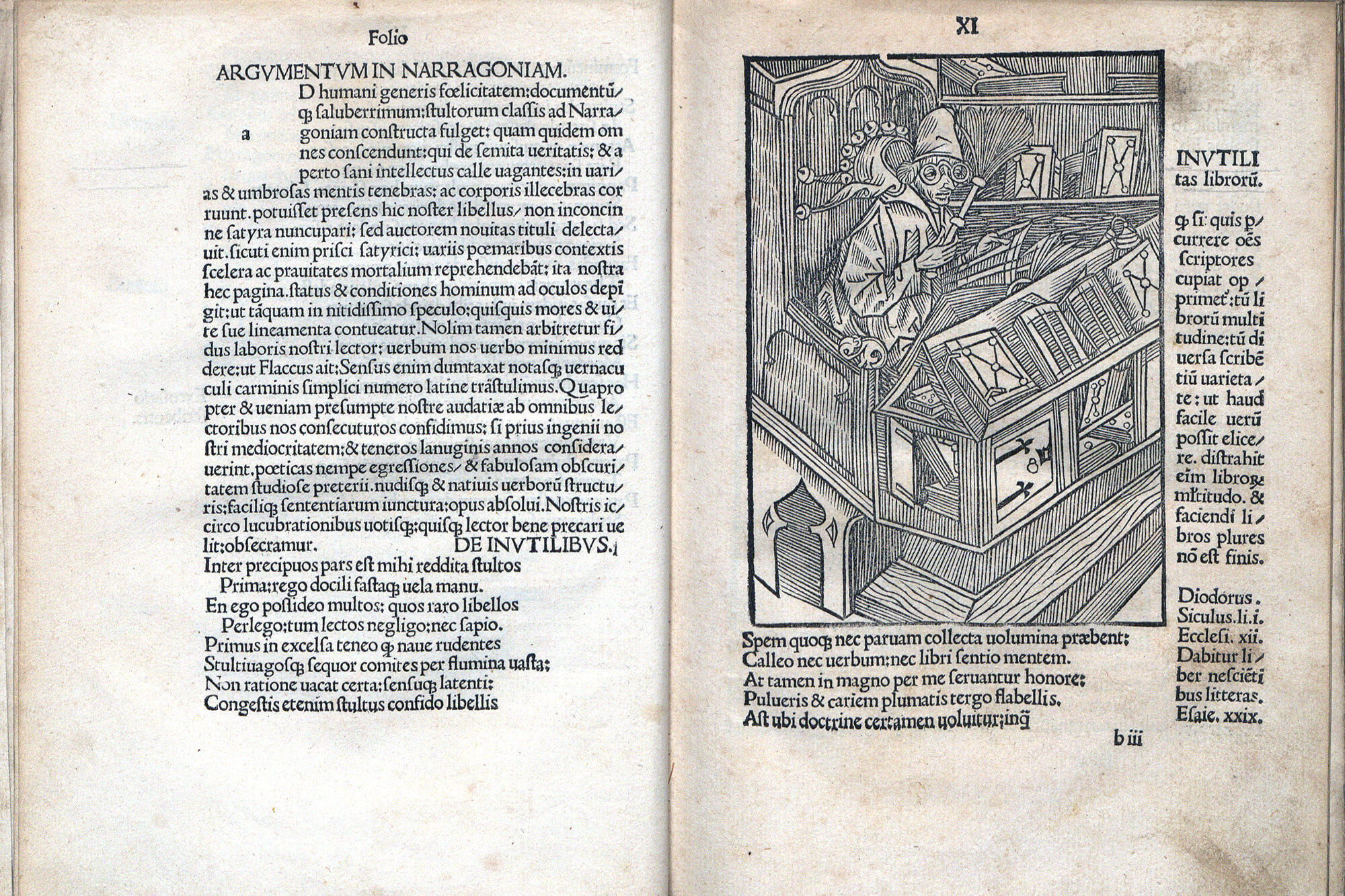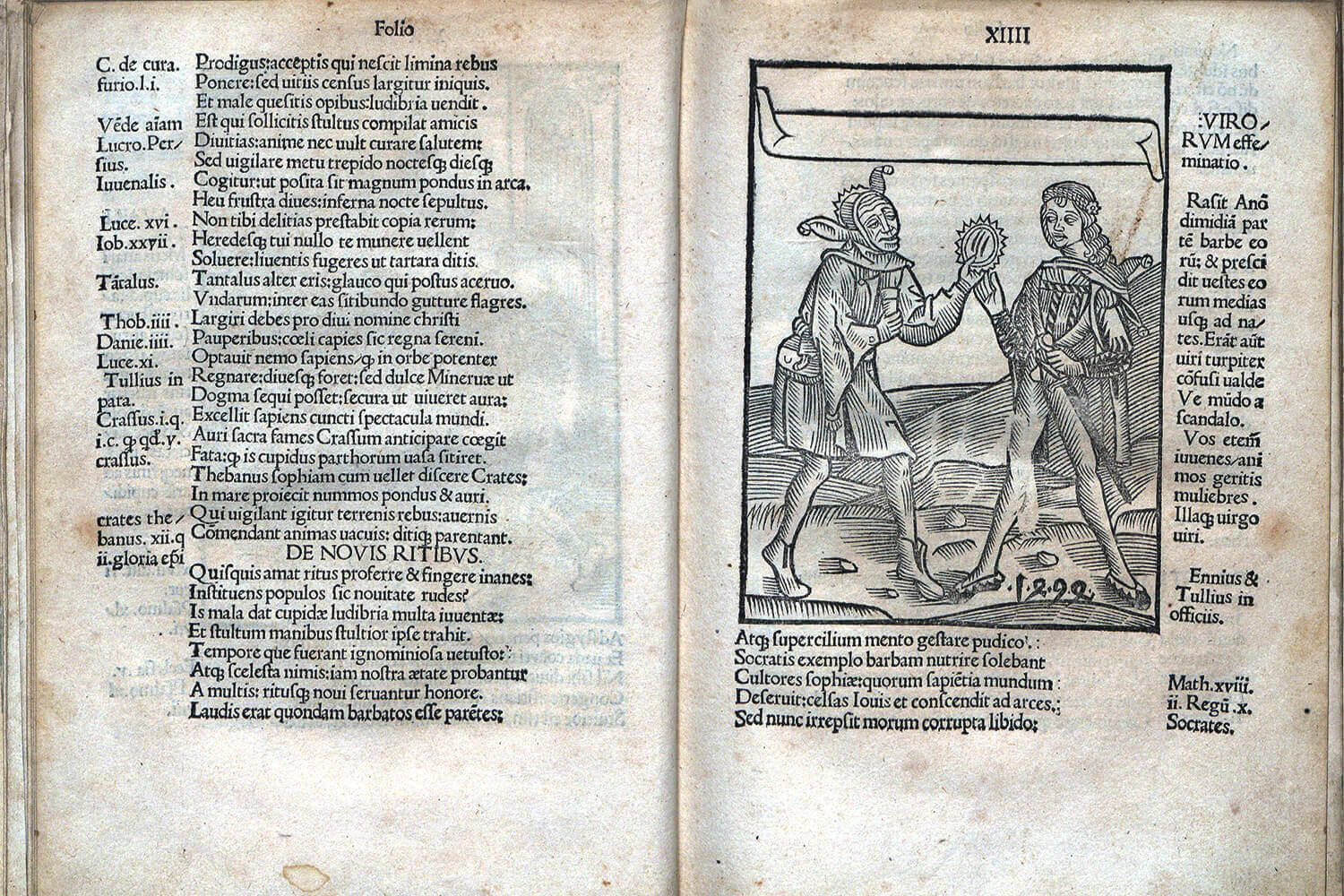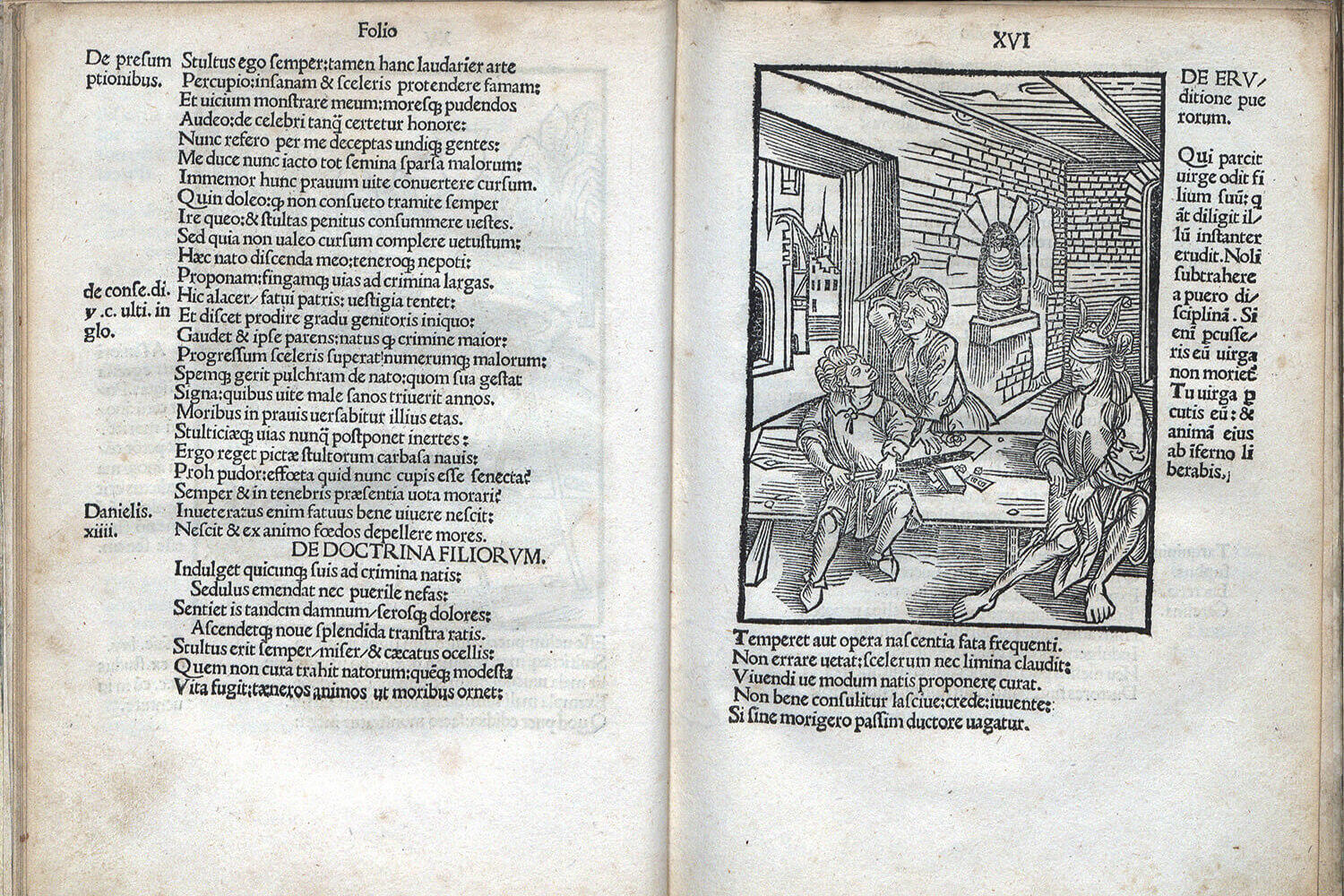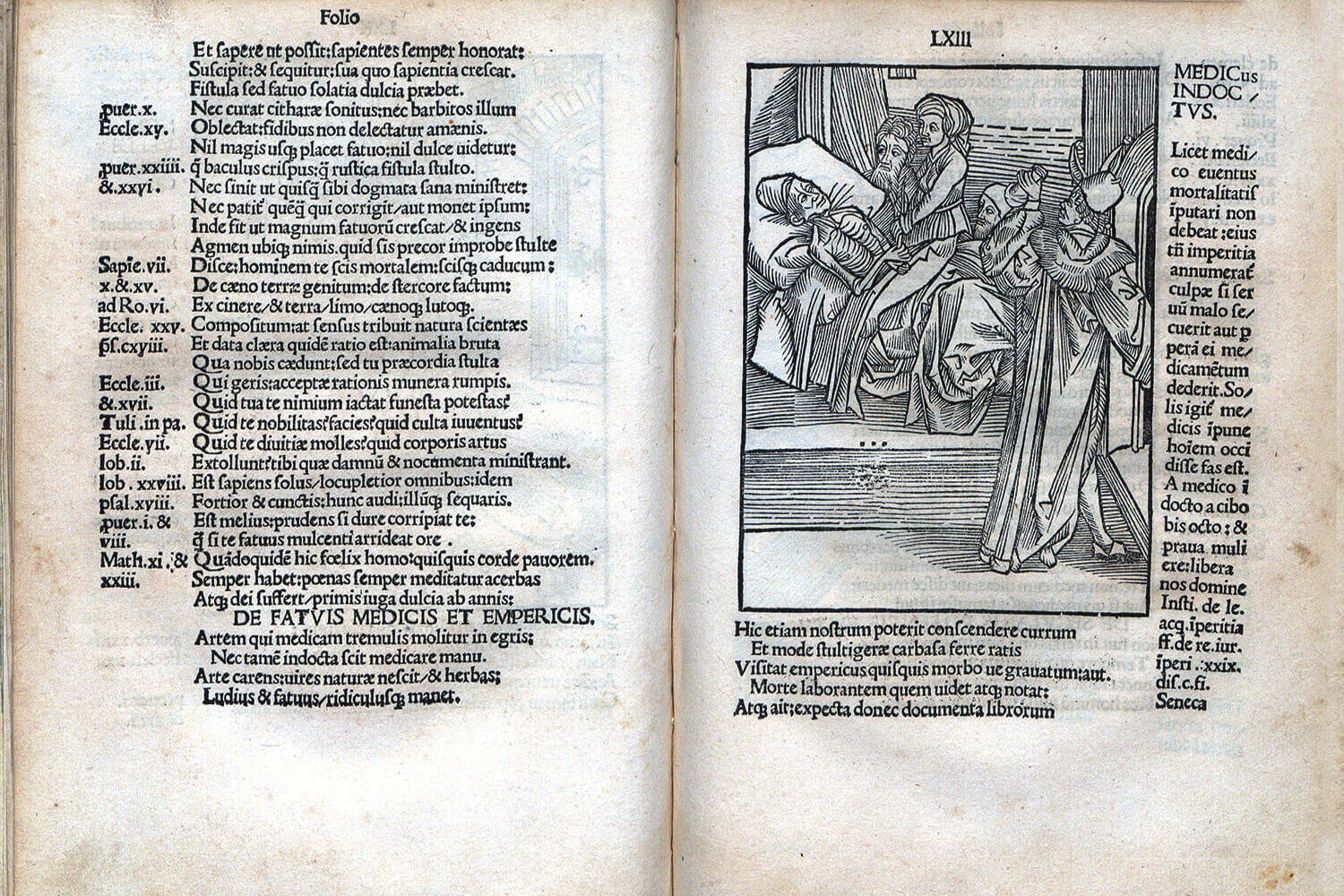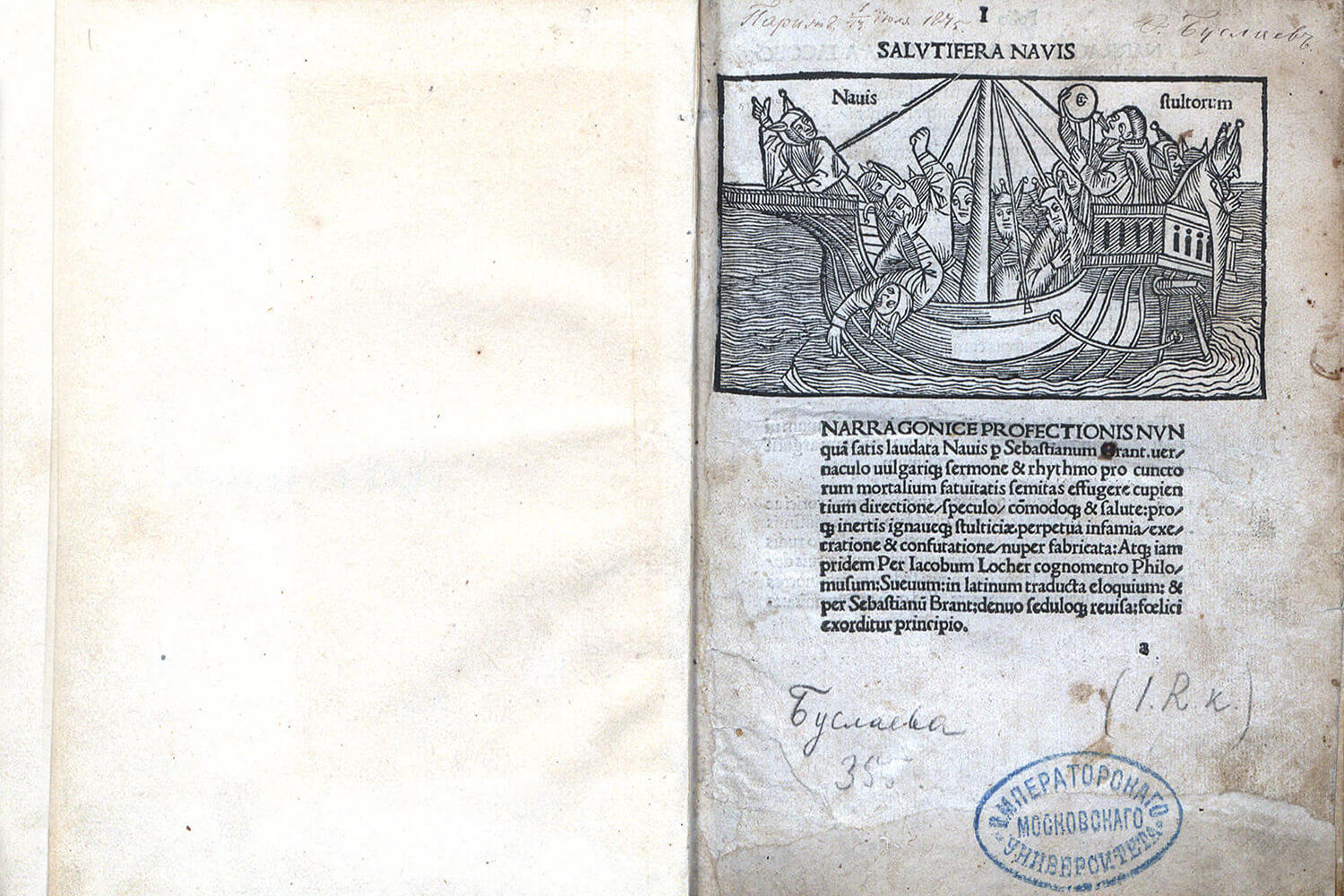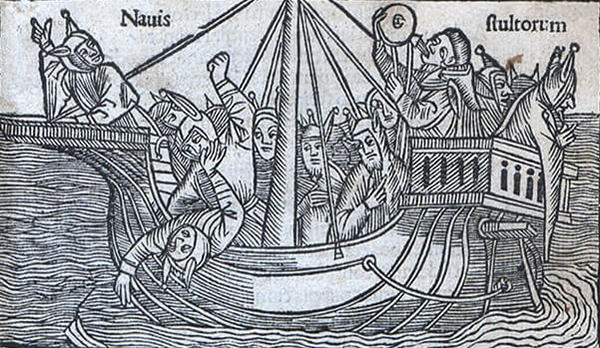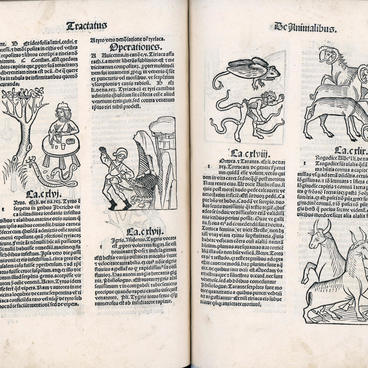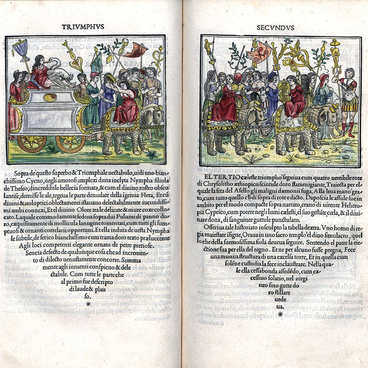The most popular work of Sebastian Brant that brought him European fame was the Ship of Fools, which appeared in 1494. This was an example of a new type of book, created specifically for publication, where the author himself had to correct the text and supply it with illustrations. The choice of language was important – Brant’s work was written in German.
1 / 7
#1
Sebastian Brant
The Ship of Fools
#2
#3
The ship of fools sailing off to Narragonia
#4
The book consists of 112 chapters, which are linked by a common construction structure and the figure of a fool. Brant classifies human stupidity by dedicating each chapter to a particular kind of fool. Bringing together all kinds of fools, he puts them on a ship sailing off to the land of stupidity – Narragonia (in German, the word “Narr” means a fool). At that time, stupidity was very close to the concept of sinfulness; therefore, the work of Brant inherited the tradition of moralizing literature, but spoke to the reader and the viewer in a new language, lively, understandable and expressive one. Brant’s fools are not schematic allegorical figures, they live and act, and we can see them clearly and recognize ourselves and our contemporaries in them.
#5
The book’s success was much contributed by the engravings. A short beginning of three or four lines was placed next to the image. A thoughtful reader would read the whole thing, a hasty one could read only those lines and look at the picture.
#6
Albrecht Dürer. Portrait of Sebastian Brant. 1520
#7
Only during the life of Sebastian Brant, the work withstood 16 reprints. The sensational success of the book caused the rapid appearance of pirated copies. Shortly after publication, the work was translated into French, then Dutch and English. Translation into Latin, planned by the author from the beginning, was entrusted to Jakob Locher, a disciple of Sebastian Brant, and appeared in 1497. No work of German literature before the Ship of Fools had had such international success. Echoes of Brant’s satire sound in the Praise of Folly by Erasmus of Rotterdam.
read morehide
11
Open in app
Share
